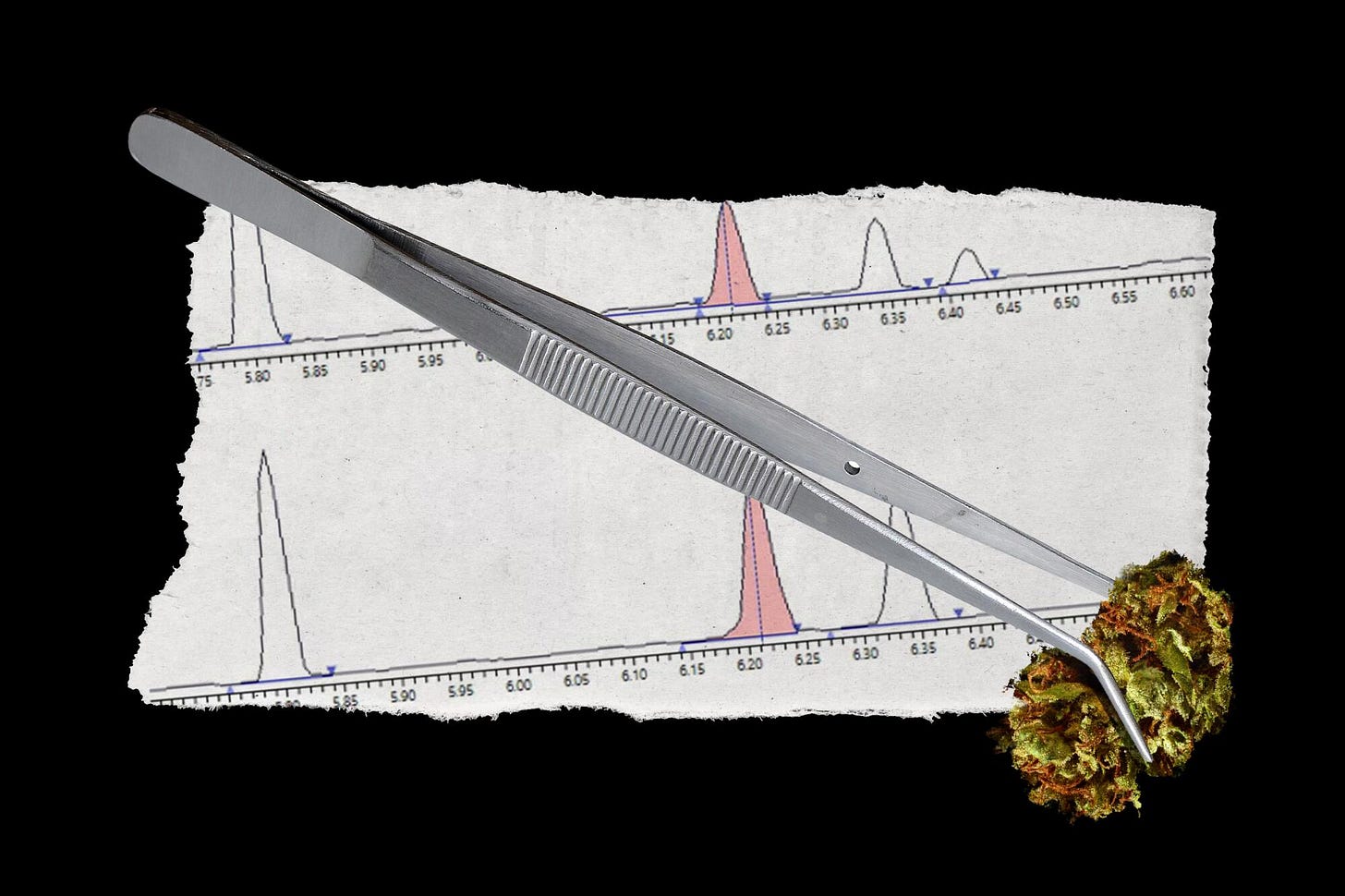The Dark Side of Lab Testing
How THC Inflation and Industry Corruption Are Undermining Cannabis Safety
When you walk into a dispensary and see “lab tested” on the label, it feels like a promise: this product is safe, reliable, and exactly what it claims to be. But beneath that label lies a deeper, troubling truth—one that many cannabis consumers, especially those using it for wellness, never hear about.
Welcome to the world of lab shopping, where inflated THC numbers and contaminated products can pass inspection—all in the name of profit.
What Is Lab Shopping?
In most legal states, cannabis brands choose which third-party lab tests their products. That might sound like quality control, but in reality, it creates a dangerous incentive.
Labs that produce the highest THC scores and the cleanest contaminant results get the most business. This practice, known as lab shopping, has turned potency testing into a pay-to-play game—leaving many consumers misled and potentially at risk.
This Isn’t a Conspiracy. It’s Already Happening.
Real cases across the country show how lab testing can go dangerously off the rails:
California (2023–2024): Sequoia Analytical Labs had its license revoked after falsifying nearly 700 reports to hide pesticide contamination. Verity Analytics followed in 2024, shut down for inflating THC levels by up to 32%.
Michigan (2023): Viridis Labs, one of the state’s biggest players, was accused of manipulating THC data and mishandling safety protocols—affecting tens of thousands of products.
Florida: Products have appeared on shelves with THC levels of 35% or higher—figures that border on biologically impossible.
Connecticut (2024): A lawsuit from MCR Labs alleges that several labs inflated THC and underreported contamination just to win clients.
New Mexico (2025): Bluebonnet Labs stands accused of falsifying data and dodging regulators—possibly violating federal law by shipping samples across state lines.
Massachusetts (2024): MCR Labs found widespread mold and yeast contamination in products that had already “passed” testing.
Why Is This Happening?
It’s not just greed—it’s the structure of the industry:
Labs are for-profit and compete for business.
Regulatory oversight is often minimal or nonexistent.
Penalties are rare, even for serious violations.
Dispensaries and consumers are conditioned to chase high THC, regardless of overall quality or safety.
Who Pays the Price?
Everyday consumers who assume “lab tested” means safe.
Medical patients, especially those with weakened immune systems, who are more vulnerable to contaminants.
Honest growers and labs that play by the rules—but lose business to competitors who cheat.
What Needs to Change
To restore trust and protect public health, we need:
Randomized, blind audits of testing labs
Independent verification of lab results
Consumer education about why high THC doesn’t mean better effects
Strict enforcement against labs that manipulate results
The Bottom Line
Cannabis lab testing should protect the consumer—not deceive them.
Until more transparency and oversight become standard, the best thing you can do is stay informed, ask questions, and support companies committed to clean, honest practices.
Looking for reliable cannabis that puts wellness first?
Disclaimer: The information provided on this blog is for educational purposes only and is not a substitute for professional medical advice. Always consult your healthcare provider before starting or changing any treatments, including cannabis use.



Thank you! I have long speculated 3rd party lab testing on weed as hype and not accurate... Recently purchased some Jack Herer and not my first time doing so thru different vendors...Jack is usually 15-21%, higher up to 28%.. This said it was 33.23% ... I went back and asked if a mistake.
Please keep making your videos! Great info and is confirming exactly what I have been thinking and experiencing!
I come from an era before lab testing ever existed—when we judged cannabis by the full-body experience, not by a number on a label. But once G13 hit the scene and gained its “most potent” reputation, THC% became the gold standard—and like many, I fell into that trap.
What changed everything for me was seeing the CripXmas COA. The lab results made one thing crystal clear: THC% doesn’t tell the full story—not even close. That sheet blew a hole in the industry’s narrative that Delta-9 is the primary driver of effect. It isn’t—not on its own.
Reading through how judging works in competitions, it’s obvious that true potency is being misunderstood. You’ve got judges dabbing concentrates between flower entries, completely muting their ability to perceive nuanced effects. The results become skewed toward “what slaps,” not “what synergizes.”
The industry zoomed in on THC and cast everything else—CBG, THCV, the entire entourage—as lesser. But if you’re not tracing genetics back 3–4 generations, if you’re not understanding where the landrace inputs shaped the terpene structure, you’re just guessing. That’s how I’ve always decoded the truth—by reading the lineage, not the lab hype.